RARE HONEY BUZZARD STOPS OFF @ SPURN POINT
- Jonathan Marshall
- May 27, 2019
- 10 min read

On Monday I visited the superb Spurn Point National Nature Reserve which is located off the tip of the coast of East Yorkshire. Spurn is a narrow sand tidal strip of land which reaches into the North Sea and forms the north bank of the mouth of the Humber estuary. Up until a storm in 2013 you could drive right down to the southernmost tip, but this storm made the road impassable at high tide. A storm in 2017 further damaged the sandbank, washing away the remaining part of the road that was damaged in 2013.
The island beyond the breach is over three miles long and as little as fifty yards wide in places. The southernmost tip is known as Spurn Head and is home to the RNLI lifeboat station and two disused lighthouses. Spurn Head covers 280 acres above high water and around 450 acres of foreshore and has been owned by the Yorkshire Wildlife Trust since 1960. In the Middle Ages, Spurn Head was home to the port of Ravenspurn where Henry of Bolingbroke landed in 1399 on his return to dethrone Richard II. It was also where Sir Martin De La See led the local resistance against Edward IV's landing on 14th March 1471 as he was returning from his six months exile in the Netherlands.
The lifeboat station at Spurn Head was built in 1810 and owing to the remote location, houses for the lifeboat crew and families were added a few years later. The station is now one of only a few in the UK which has a full time paid staff with all the others being on the River Thames in London. During the First World War two coastal artillery batteries were added at either end of Spurn Head with quick firing guns in between them.
The military also built a railway line from the village of Kilnsea all the way along to the end of Spurn Point with a total length of 3.75 miles. The line was built in 1915 to supply military installations along this stretch of coast. Spurn Point had originally been militarised in 1805 during the Napoleonic Wars and when the First World War was declared the number of military personnel greatly increased overnight. The War Department decided that a railway line between Kilnsea and Spurn Point would be the best option for a supply chain and purchased the land.
The line was constructed by CJ Wills & Company with the rails and other second hand materials coming from the Great Central and Manchester, Sheffield and Lincolnshire Railways. The line was eventually closed down in 1951 and was replaced by a road and the land was demilitarised between 1956 and 1959 before being sold in 1960. Apart from some small sections of the rails sunk into tarmac/concrete, there is not much left to show that this railway even existed.

Since the storm in 2017, Spurn has now become a tidal island, as the narrowest part of the sandbank connection to the mainland is flooded with each high tide. The spit is made up from sand, shingle and boulder clay eroded from the Holderness coastline that is washed down the coast from Flamborough Head. Material is washed down the coast by long shore drift and accumulates to form the long narrow embankment in the sheltered waters inside the mouth of the estuary.
There are two lighthouses at the end of Spurn Point, the Low Lighthouse (built 1852) and the brick lighthouse in the middle of Spurn Head (built 1895). Only the foundations of the low lighthouse now remain with a large water tank replacing the rest of it. The brick lighthouse is painted black and white and its main light had a range of twenty miles before the light was discontinued in 1985. In 2013 the Yorkshire Wildlife Trust was awarded nearly £500,000 to restore it and once the work was completed it reopened to the public in March 2016.
The landward side mud flats are an important feeding ground for wading birds and the area has a bird observatory for monitoring migrating birds. Their migration is assisted by the east winds in autumn, resulting in drift migration of Scandinavian birds, sometimes leading to a spectacular "fall" of thousands of birds. Many rarer species have been sighted there, including a Cliff Swallow from North America, a Lanceolated Warbler from Siberia and a Black-Browed Albatross from the Southern Ocean.

More commonly, birds such as Wheatears, Whinchats, Common Redstarts and Flycatchers stop off at Spurn on their way between breeding and wintering grounds. When the wind is in the right direction migrants are funnelled down Spurn Point and are counted at the Narrows Watch point, more than fifteen thousand birds can fly past on a good morning in autumn with three thousand quite normal. In 2018 the Yorkshire Wildlife Trust opened a visitor centre and new car park near the entrance to the reserve.
In recent days there had been sightings of a Serin, Rosefinch, Turtle Dove and a Honey Buzzard and as I approached Easington, a few miles north of Spurn, I turned off down Vicars Lane where the Serin had been seen. Sadly there was no sign of it so I carried on to the Spurn Point visitor centre and as I arrived there were Swallows flying overhead. After a quick look at the sightings board I returned to my car and drove the half mile back up the road to Kilnsea Wetlands where there were Sand Martins flying over the car park. On a fence post near the car park I briefly saw a male Reed Bunting which flew off as I walked past and after a few hundred yards I arrived at what was originally the only hide.
Since my last visit this hide has been replaced with a larger new hide allowing more people to use it with the old hide being moved across to the other side of the road. From here I could see more than twenty Shelducks and Lesser Black Backed Gulls as well as a few Herring Gulls. Over to the far left hand side there were a trio of Avocets and four Redshanks with a pair of Oystercatchers flying in and landing amongst them. A quartet of Mute Swans swam round from the left hand side of the hide and continued on over to the far right hand side of the water. Swooping over the water and battling against the wind were several Sand Martins as a group of Mallard chicks scurried along the water's edge closely followed by their mother.

A Pied Wagtail flew in and landed just in front of the hide before taking off a second or so later and landing on a shallow mud bank over to the left of the hide. One of the Avocets made its way across towards the hide as one of the Redshanks flew over to the right hand side of the hide to wade along the water's edge. It now began to rain as a pair of Sandwich Terns flew in off the sea high up in the sky before circling over the water and landing a couple of hundred yards away at the back of the water. To the right of the Sandwich Terns I could see a group of around nine Sanderlings huddled together against the wind and rain. I left the hide and continued along the path to a viewing screen about two hundred yards further along the path and as I reached it a pair of Skylarks rose up from the grassy bank either side of the screen.
The Sandwich Terns were still present at the far side of the water whilst in the grass to my left were a group of Starlings and to the right a large group of Hebridean Sheep. I walked further along to where the path splits in two with the right hand path taking you back towards Spurn Point and the left hand path taking you along the side of Easington Lagoons. I took the left hand path and as I walked along a Great Tit and Long Tailed Tit flew along the hedgerow to my left as Swallows and Sand Martins swooped past me along the path. The Great Tit turned to the right in front of me and went down the embankment and landed on a wooden post move from one to the next as I walked along beside it.
I eventually reached the Easington Lagoon where a Little Egret took off from the near shoreline and on the far side of the lagoon in the sand dunes were a group of Little Terns being hassled by a couple of Crows. In the bushes just in front of me a pair of Whitethroats were briefly singing from the top of the bushes before flying off along the path and then disappearing over the water. It started to spit with rain again so I retraced my steps to the hide where high in the sky over to the left in the distance was the very rare Honey Buzzard soaring higher and higher.

There are less than forty pairs resident in the UK between May and October and around a hundred individuals passing through in the autumn. I walked back to the car and when I reached the car park I spotted where the old hide had been moved to as it was now situated on the other side of the road around four hundred yards away. This land has been recently acquired by the Yorkshire Wildlife Trust and to get to the hide I crossed the road and went through a wooden gate and followed the path between a wire fence and a wild flower covered grass embankment.
From the hide I could see that they were currently pumping water into the field in front of it with a pair of Mallards and a Little Egret already making use of the water. At the far right hand side of the water were a group of Linnets which then flew up and briefly landed just in front of the hide before returning to the water's edge. A Skylark flew in and landed with its back to me around twenty feet away before flying away and amongst the Linnets I had a brief glimpse of what looked like a Redstart amongst them but if flew off before I could get a picture.
It was now half past twelve so I returned to my car and drove the short distance to Yorkshire Wildlife Trust's visitor centre at Spurn Point. From the visitor centre cafe I could see a pair of Little Egrets on the water in front of the Canal Scrape Hide as well as a trio of Mallards. After a bite to eat at the cafe I walked round to the Canal Scrape Hide where the Little Egrets had gone but the Mallards were still there with Coots and Moorhens around the water's edge and in the grass at the far right hand side a male Pheasant was making a lot of noise.

I left the hide and walked across the road to path leading along the edge of a field towards the sea and half way along I spotted a Meadow Pipit sat on a wooden fence post about one hundred yards away. I eventually reached the sea and turned to my right walking along the sand banks and at the other side of a small area of grassland to my right I saw yet another Meadow Pipit on a post. After reaching the Sea Watching Hide I turned to my right and walked down some steps past the warden's bungalow and over the road to a viewing screen.
Groups of Cormorants were flying up the river Humber and over to my far left I could just see a Fox's head above the tall grass looking back at me. I continued along the road until it disappeared and disintegrated under the sand and turned to the right heading for where the Fox had been sat but when I got there it had gone. I continued on to the breach area where during some high tides the sea can breach the sand bank submerging it under water. As I approached it I spotted a pair of Tree Pipits flying low over the ground to my right and then stopping to perch around fifty yards away before flying off towards the site where the Fox had been.
When I reached the breach I turned to the right and walked down the sand towards the water's edge and asleep amongst some small rocks were a group of Turnstones and Sanderlings. There were also more Turnstones moving along the edge of the rocks and scurrying back and forth along the wet sand further out was a lone Dunlin. As I walked back up the beach the Turnstones, Sanderlings and single Dunlin flew off north across the wet sand towards the water's edge. I walked back along the road and when I was about half way back to the visitor centre it began to rain heavily so I turned off the road and back up the steps and into the Sea Watching Hide to wait for it to stop.

After about twenty minutes it stopped raining I returned to the road and continued on to the visitor centre where on the feeders were Goldfinches and Tree Sparrows. I walked round to the Canal Scrape Hide as the Little Egrets had returned but were currently amongst the reeds on the far side of the water. A pair of Swallows were flying back and forth in front of the hide and they made a brief flight into the hide via the opening in the hide before flying back out. I was hoping that the Little Egrets would move closer but I had only been in the hide a few minutes when it started to rain again even heavier than before.
It rained for at least fifteen minutes before it started to ease off and eventually stop with the sun coming out as a Magpie perched on a wooden post to my right. After it flew off a House Sparrow landed on the same post looking out over the water before turning round to look at me and then back out at the water before flying off. One of the Little Egrets took off across the water and landed just in front of the hide as the other one flew off north towards Kilnsea Wetlands. The Little Egret began probing the shallow water for food, moving back and forth in front of the hide before disappearing off to the right as a Pied Wagtail landed on the grass.

I returned to my car and drove up to Kilnsea Wetlands to take another look at the hide on the new land to see if I could see the Redstart again. Sadly there was no sign of the Redstart but on the grass beyond the accumulating water were two Hares and a pair of Crows. Before I headed home I returned to Vicars Lane in Easington for one more attempt to see the Serin which had been visiting a garden behind a former school house. On the ground below a lone feeder were Greenfinches, House Sparrows, Linnets, Collared Doves and Blackbirds. I waited more than half an hour for it to appear but without success so I walked back to my car as a few Starlings flew overhead.
I have attached a few photos and a full sightings list from my visit to Spurn Point Nature Reserve.



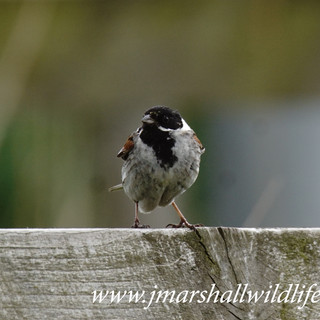









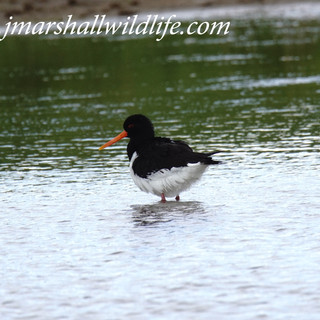

















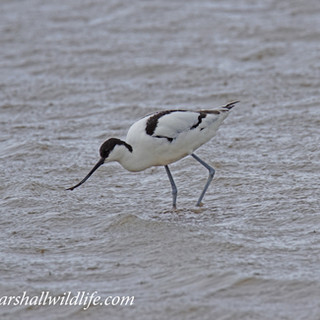















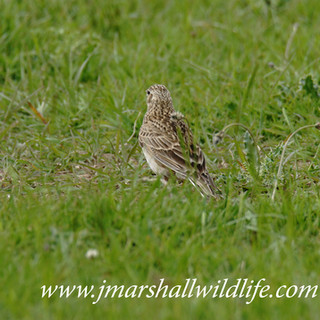











































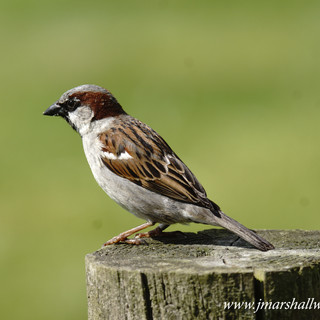













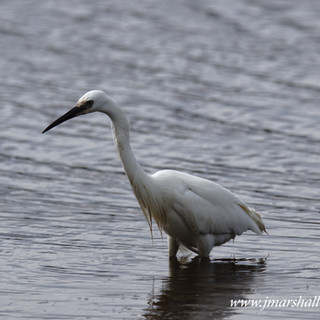






















Comments